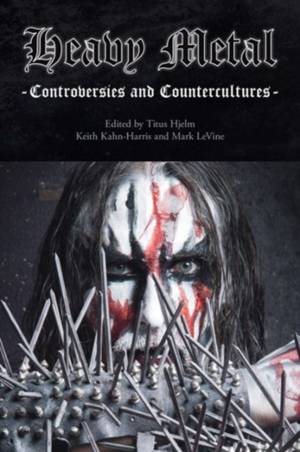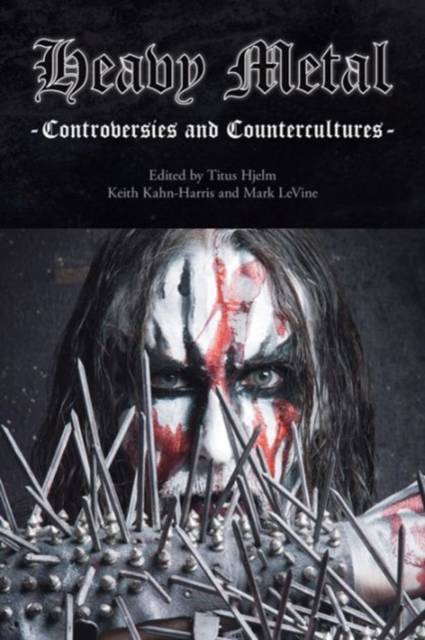
- Afhalen na 1 uur in een winkel met voorraad
- Gratis thuislevering in België vanaf € 30
- Ruim aanbod met 7 miljoen producten
- Afhalen na 1 uur in een winkel met voorraad
- Gratis thuislevering in België vanaf € 30
- Ruim aanbod met 7 miljoen producten
Zoeken
€ 145,45
+ 290 punten
Omschrijving
Heavy metal is now over 40 years old. It emerged at the tail end of the 1960s in the work of bands including Iron Butterfly, Vanilla Fudge, Jimi Hendrix, Deep Purple, Led Zeppelin and - most importantly - Black Sabbath. In the 1970s and early 1980s, heavy metal crystallised as a genre as bands such as Judas Priest and Iron Maiden removed most of the blues influence on the genre, codifying a set of basic metal characteristics that endure to this day: distorted guitars, aggressive vocals, denim, leather and spikes. In broad terms, wherever it is found and however it is played, metal tends to be dominated by a distinctive commitment to 'transgressive' themes and musicality causing it to be frequently seen as controversial music. Controversies surrounding the alleged (and often documented) connection between heavy metal and, variously, sexual promiscuity, occultism and Satanism, subliminal messages, suicide and violence have all made heavy metal a target of moral panics over popular culture. Metal has variously embraced, rejected, played with and tried to ignore this controversy. At times, the controversy dies down and the previously transgressive becomes relatively harmless - as in the transformation of Ozzy Osbourne from public enemy to loveable dad. Still, metal remains irrevocably marked by its controversial, transgressive tendencies. Indeed, the various moral panics that metal has been subjected to are not only constitutive, at least in part, of metal scenes, but are encoded in metal's transgression itself. As with hiphop's "ghetto" roots, metal's history of extreme sonic, lyrical and visual messages continue to give it credibility with new generations of fans today. The aim of this anthology is to analyse the relationship between heavy metal and society within a global context. It provides a thorough investigation of how and why metal becomes controversial, how metal 'scenes' are formed and examines the relationship between metal and society, including how fans, musicians and the media create the culture of heavy metal. Reviews: "A powerful addition to the metal studies literature, this book is overflowing with insights into the cultural politics of heavy metal music. With lively writing, interdisciplinary approaches, and a global perspective, these chapters offer ideas that have broad implications for the study of popular music scenes and their dynamics, media scandals, the relationship between music and affect, and the role of culture in social life." -- Professor Harris M. BergerTexas A & M University "Heavy Metal: Controversies and Countercultures grants a deeper understanding of how metal's transgressive qualities have come to define how the genre is viewed from both the outside and within...its interdisciplinary and global focus, along with its often enthusiastic and engaging viewpoints, present a fascinating portrait of how the controversy surrounding metal operates within wider society." -- Craig Hayes, PopMatters "The essays...are surprisingly sophisticated conceptually and theoretically, and they demonstrate what can be accomplished by turning high-culture terms and methods on a supposedly low-culture form like heavy metal. Anthropologists have profitably studied other popular culture/music practices, like the 'rave' phenomenon or psytrance events (see for example Graham St. John's Global Tribe: Technology, Spirituality, and Psytrance, reviewed elsewhere in ARD), and I look forward to reading ethnographic studies of heavy metal concerts, performers, and scenes." -- Jack David Eller, Anthropology Review Database, 2013
Specificaties
Betrokkenen
- Uitgeverij:
Inhoud
- Aantal bladzijden:
- 260
- Taal:
- Engels
- Reeks:
Eigenschappen
- Productcode (EAN):
- 9781845539405
- Verschijningsdatum:
- 30/04/2013
- Uitvoering:
- Hardcover
- Formaat:
- Genaaid
- Afmetingen:
- 160 mm x 236 mm
- Gewicht:
- 544 g

Alleen bij Standaard Boekhandel
+ 290 punten op je klantenkaart van Standaard Boekhandel
Beoordelingen
We publiceren alleen reviews die voldoen aan de voorwaarden voor reviews. Bekijk onze voorwaarden voor reviews.







